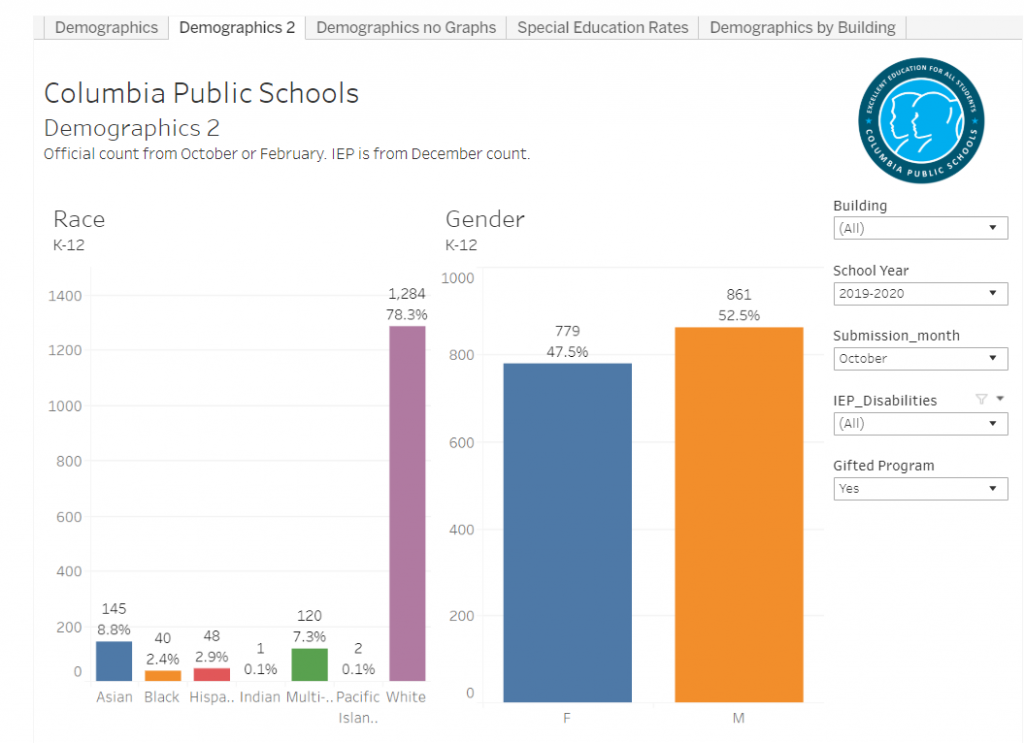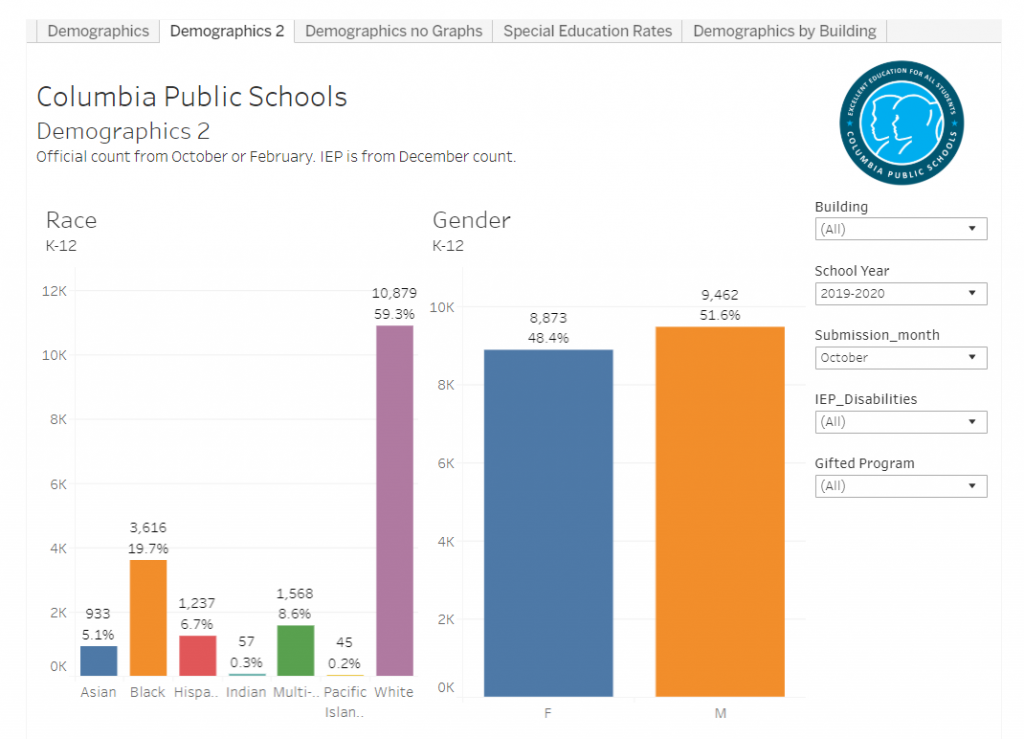By Tara Warne-Griggs
On Monday, June 8, 2020, former Rock Bridge High School students presented a list of student demands to the Columbia Public Schools Board of Education. The first of eight items on the list: “Disband Extended Educational Experiences (EEE) and other gifted programs and redirect the resources to underprivileged kids.
When this list was posted to several social media pages, it was striking how many people’s first comments were about how important EEE was, or asking why this would be on the list at all? Many people jumped in to state how important EEE had been to their particular student.
There’s a whole conversation to be had about why people’s first response was to ask about EEE, rather than to chime in in support of the other demands. But this brief comment simply provides some information about EEE demographics and the criteria used to place children in the program.
The student body in Columbia is quite diverse. 40% of our students come from minoritized groups, while 60% are socially defined as white. 20% of our students are Black/African American, 9% identify as multiracial, 7% as Latinx, 5% as Asian, and 0.5% as Indigenous.

With EEE, however, the Columbia Public School’s gifted program, the demographics look quite different.
Students socially defined as white comprise 78% of the “gifted” population in CPS while representing 60% of the total student body. Students identified as Asian (9%) or Multiracial (7%) also make up a larger portion of EEE students than one would anticipate based on the larger population. Compare this with 3% identified as Latinx, 2% Black/African American, and 0.2% Indigenous students.
Are we really to believe only 88 out of 4,853 (2% of the population) of Black and Latinx are gifted? And believe that 12% of White students are gifted? (ref/citation)

According to the EEE pages on the CPS website, EEE is a one-day/week program for elementary students, a research/problem solving course for middle school students, and a resource room/teacher for high school students.
“To qualify for these programs, students must meet program benchmarks on the Wechsler Intelligence Scales for Children, Fifth Edition. This test is administered one-on-one to any student new to CPS elementary schools if the student first meets a program benchmark on the Naglieri Nonverbal Ability Test, Second Edition. The NNAT3 (Naglieri Nonverbal Ability Test) is administered to all students new to CPS, all kindergarten students, and all second grade students during the spring of the school year. Please note that students entering CPS in middle school are not automatically screened and must submit an advocacy packet to be considered.”
https://www.cpsk12.org/domain/5372
Columbia Public Schools uses the highly problematic Weschler Intelligence Scales for Children (WISC V) as the mechanism for sorting children into gifted programming. In their 2016 review of the WISC V, Watkins and Canivez criticized the test’s publisher for failing to address the potential of measurement bias in the instrument. They expressed disappointment that the publishers had failed to produce data on measurement bias or reliability estimates disaggregated by race/ethnicity, gender, and parent education level.
Furthermore, the National Association for Gifted Children strongly cautions school districts not to rely on an IQ test for selecting children into gifted programs.
“Nevertheless, IQ tests should be interpreted cautiously for children from culturally and linguistically diverse backgrounds, and for all children, and should never be the only basis for exclusion from gifted programs. In addition, all efforts should be made to accommodate linguistic diversity and test children in their native language. NAGC recommends that …Full Scale IQ scores not be required for admission to gifted programs.” (NAGC, 2008)
NAGC (2019)In their position statement defining giftedness assert that Students with gifts and talents:
Grissom and Redding (2016), stated
“Black students are less likely to be assigned to gifted services in both math and reading, a pattern that persists when controlling for other background factors, such as health and socioeconomic status, and characteristics of classrooms and schools. We then investigate the role of teacher discretion, leveraging research from political science suggesting that clients of government services from traditionally underrepresented groups benefit from diversity in the providers of those services, including teachers. Even after conditioning on test scores and other factors, Black students indeed are referred to gifted programs, particularly in reading, at significantly lower rates when taught by non-Black teachers, a concerning result given the relatively low incidence of assignment to own-race teachers among Black students.”
The Extended Educational Experiences (EEE) gifted program excludes Black, Latinx, and Indigenous students. The school district selects program participants using a single metric that is likely biased and unreliable for children who are not white, or middle/upper class. The district fails to account for the known disparities in gifted placement. Finally, the district does not follow recommended practices for placing children into gifted programs.
Grissom, Jason A. & Redding, Christopher (2016) Discretion and disproportionality: explaining the underrepresentation of high-achieving students of color in gifted programs, AERA Open, vol 2:1.
https://doi.org/10.1177/2332858415622175
NAGC (2019) Key considerations in identifying and supporting gifted and talented learners: A report from the 2018 NAGC definition task force.
Watkins, Marley & Canivez, Gary. (2016). Review of the Wechsler Intelligence Scale for Children–Fifth Edition: Critique, Commentary, and Independent Analyses. In Intelligent Testing with WISC-V, A.S. Kaufman, S.E. Raiford, and D.L. Coalson (Eds.), Wiley publishers, pp. 683-702.